Medical Device and Orthopaedic Implant Engineering & Surface Finishing
Medical devices and orthopaedic implant engineering is becoming popular day by day providing ease to mankind. There is always a need to improve the working and reliability of medical devices. It not only involves the study of biological needs but also demands intricate engineering that is very close to perfection. Orthopaedic implants are also very important as they recreate a body structure and help the injured to get back to their original form. Therefore, both medical devices and orthopaedic implants need a lot more attention to have higher efficiency and excellent performance. It requires experienced surface finishing routes, choice of the right technique, accurate implementation, and dimensional control. All these requirements have made it important to ensure the right surface finishing technique for the concerned medical device or implant. It will help reduce the cost of the overall equipment and provide better results.
Medical Engineering
Medical engineering is the application of engineering knowledge to develop medicine and healthcare products, devices, and procedures. Multiple directions are present in this field to work for therapeutic, treatment, diagnosis, or prevention techniques. It combines the knowledge of biology and medicine with that of engineering. It is an interdisciplinary field that has high demand in the future. Better is the engineering technology, better will be the health-care and medicine department. It will improve and revise the traditional healthcare methods with advanced and efficient ones.
Surface Finishing Techniques for Orthopaedic Implant Engineering
Surface finishing techniques play a vital role in the development of both medical devices and orthopaedic implants. No medical equipment can shine better without being finished efficiently by choosing the right surface finishing tool. For orthopaedic implants, there is a high demand for dimensional accuracy that can be achieved precisely by using lathe surface finishing, lapping, polishing, and drag finishing processes. Medical devices also have intricate parts such as blades that needs to be finished perfectly to achieve professional performance. There is no chance of risk in these devices in terms of dimensions, sharpness, roughness, alignment, etc. It, therefore, requires an accurate measurement that is possible using the surface finishing techniques mentioned above.
Manufacturing Process for Orthopaedic implants
Orthopaedic implants are defined as the support or replacement for hard connective tissues such as bones and joints. Orthopaedic implants are made with metals, alloys, ceramics, polymers, or composites depending on the application. But mostly metals are used because they provide extra support and compatibility with the body. These can be temporary or permanent depending on the reason for using them. Orthopaedic implants serve a crucial role for people who have fractured or broken their arm or leg or even backbone. These implants are specifically designed according to the patient and then implanted with great care and safety. Coatings are also done to save the body from unwanted reactions and problems that may arise. These implants include screws, nails, plates, sticks, and wires.
Orthopaedic implants are made by multiple engineering techniques. Automation and simulation processes have made manufacturing far easier and more efficient than before. Mostly, titanium and stainless-steel alloys are used for orthopaedic implants. The following steps are carried out:
- Selection of the right material depending on the type of implant and duration.
- After this, CNC machining with pre-programmed instructions is used. A vertical machine center (VMC) is also utilised for this purpose.
- After getting the required implant shaped by CNC or VMC, the next processes are carried out to meet the accuracy demands and surface finishing. This buffing process (also called polishing) is used. It has two types namely cutting buff and finishing buff.
- After buffing, electrochemical polishing is done to remove any extra matter or particles from the surface of the implant. Micro peaks and hollow surfaces are being smoothed to increase the smoothness of the surface.
- At the end, there is an ultrasonic cleaning process to remove any remaining particles from the implant.

Non-destructive Testing for the Medical Industry
NDT is playing a very important role in checking the durability, reliability, and quality of manufactured implants. Any flaws will be detected before use and thus lessening the vulnerability of the patient. Visual testing is first carried out to confirm there are no visible flaws in the implant by using visual aids. Liquid Penetrant Testing or magnetic particle imaging is performed to find any defect or crack in the implant. Eddy current detection can also be used to find any additional components or changed behavior of the implant. NDT is important because it leaves the implant unchanged and safe after the testing.
What are orthopaedic implants made of
Following are the materials and alloys that are biocompatible and are being used in making implants:
Metals
Cobalt Chrome
It is an alloy (Co-Cr) that has high wear resistance, strength, and temperature endurance. Other elements such as molybdenum are also added to improve its performance. Mostly, it is used in dental and orthopaedic implants. Removable partial dentures and porcelain fused to metal fabrication structures are done using Co-Cr alloys. It is used to treat spinal deformity and stability of the spine. These are lightweight and comfortable alloys that fit perfectly into the mouth and do not irritate much. In vitro and in vivo tests have proved that it can be used in surgical implants and is biocompatible. It shows excellent corrosion resistance due to the presence of chromium.
Lapping and Polishing Cobalt Chrome
Test Requirements: To mirror polish cobalt chrome balls, 28mm diameter. Ra < 2µinches and Roundness < 0.0004”
Equipment used: 1. Kemet Spherical polisher, 2. Cast iron lap, 3. NLH cloth, 4. Kemet Diamond compound 1-KC547, 5. OS lubricating fluid, 6. CO-42 cleaning fluid, 7 .Precise tooling
Process breakdown: The lap was fitted to drive boss on spherical polisher, a square of NLH cloth was placed on top with 1-KC547 diamond compound applied to the middle, the machined ball was pushed onto the machined shaft and inserted into the yoke holder and placed onto cloth, a slight spray of OS lubricating fluid was applied and was run for 15 minutes till polished up.
Results: Surface finish requirement < 2 µinches (0.051 µm)
Surface finish achieved: 0.0119 µm
Roundness required: 0.0004” (10.16 µm)
Roundness achieved: 2.365 µm
Before Polishing Cobalt Chrome
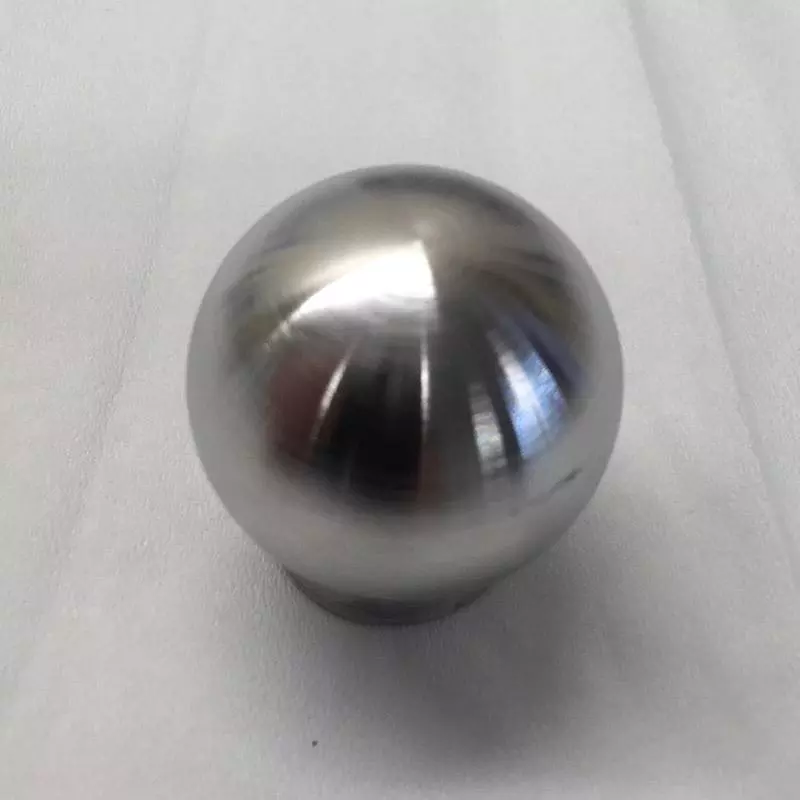
After Polishing Cobalt Chrome
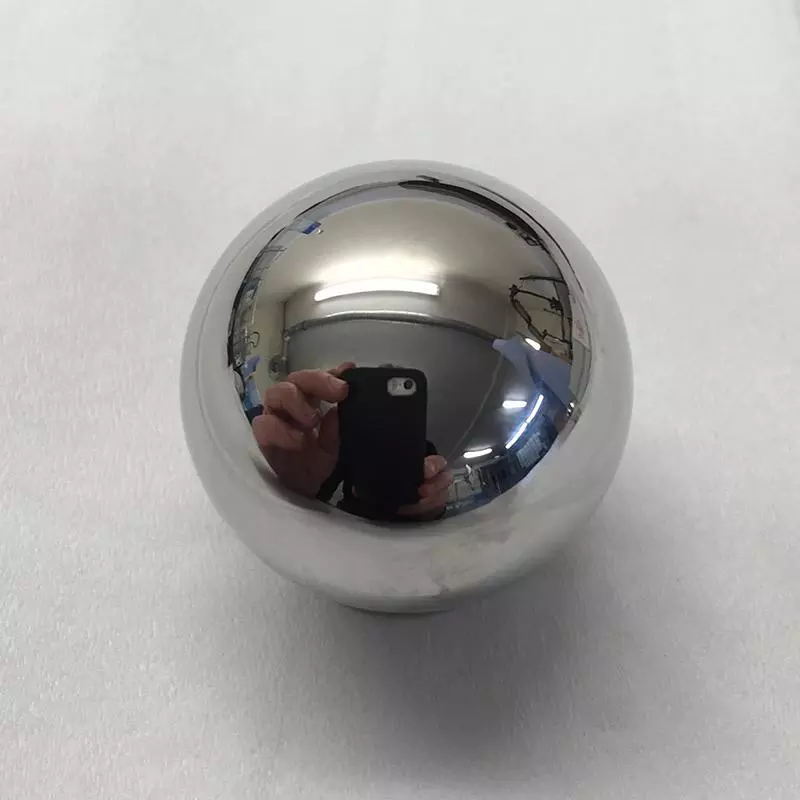
Aluminium
Iron
Cobalt-based Alloys
They are widely used alloys for biomedical implants for hip joints, knee joints, and others. These are used to make a metal-on-metal hip joint for resurfacing. They also have highly corrosion-resistant properties with efficient wear resistance in a biological environment that even contains high chloride ions. It is because of the crystallographic nature of cobalt. Other properties are imparted by alloying it with elements such as chromium, molybdenum, and tungsten. These alloys are used to make dental restorations. Although the price of these alloys is a bit higher the performance under a corrosive environment and stability can compensate for it.
Lapping and Polishing Tibial
Test Requirements: To mirror polish a Tibial with pin
Component/Material: Machined Tibial with pin
Machine Type: Kemet 15” diamond lapping/polishing machine
Lap Plate: Kemet Iron & Copper composite lapping plate, annular grooved, CHEM – H polishing pad
Abrasive Type/Grade: Kemet Diamond Slurry Type K micron Standard & COL-K (NC)
Additional Pressure: 4 Kg hand weights
| Process Breakdown | |||
|---|---|---|---|
| Stage | Plate/cloth type | Abrasive type/grade | Process time |
| 1 | Kemet Iron | Type K Standard Diamond slurry | 40 minutes |
| 2 | Kemet Copper | 20 minutes | |
| 3 | CHEM-H | COL-K (NC) | 40 minutes |
Comments: A special fixture would need to be made to hold the Tibial with pin.
Fixture on Polishing Machine with Annular grooved Lapping Plate
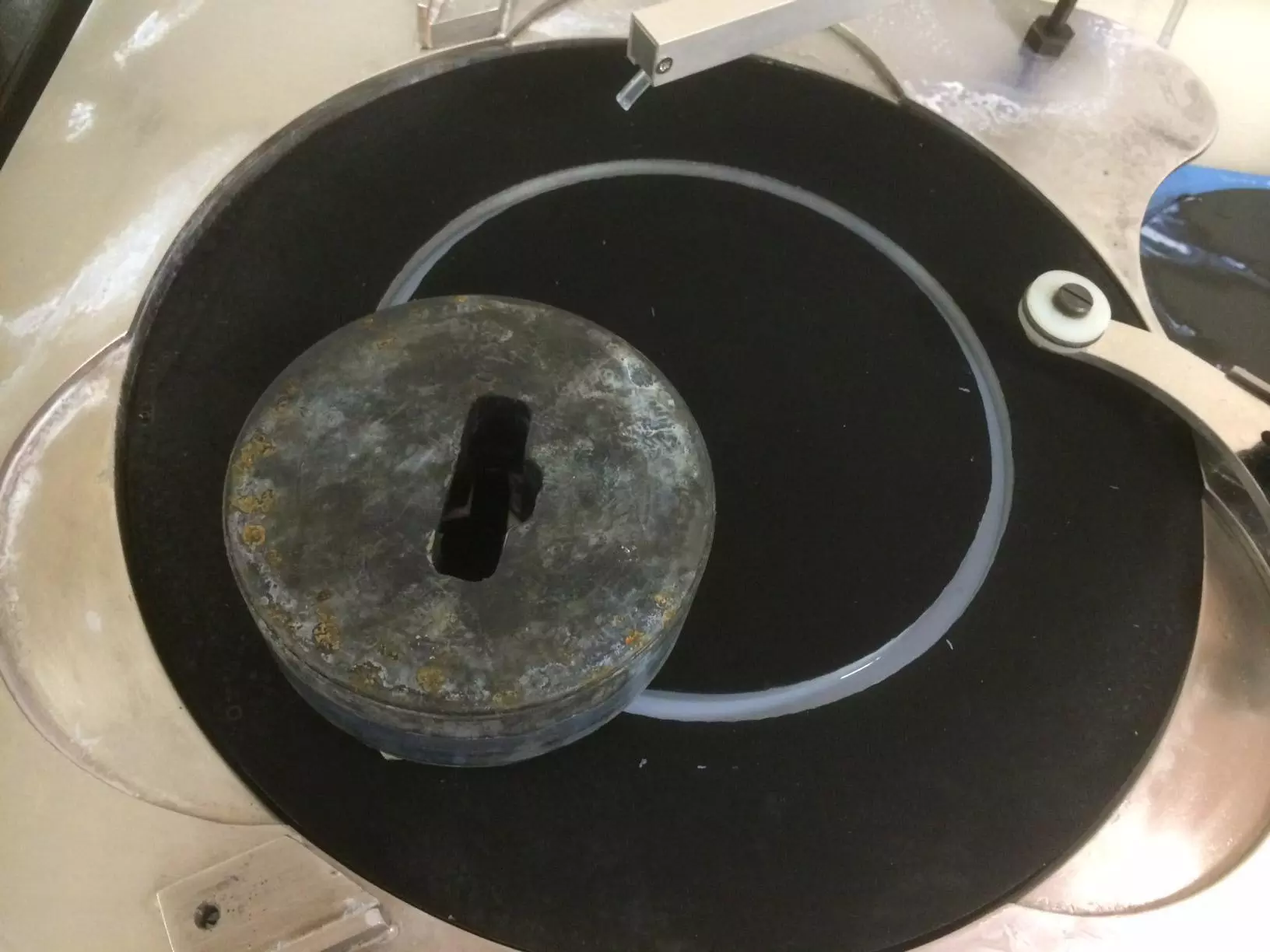
Polished Tibial
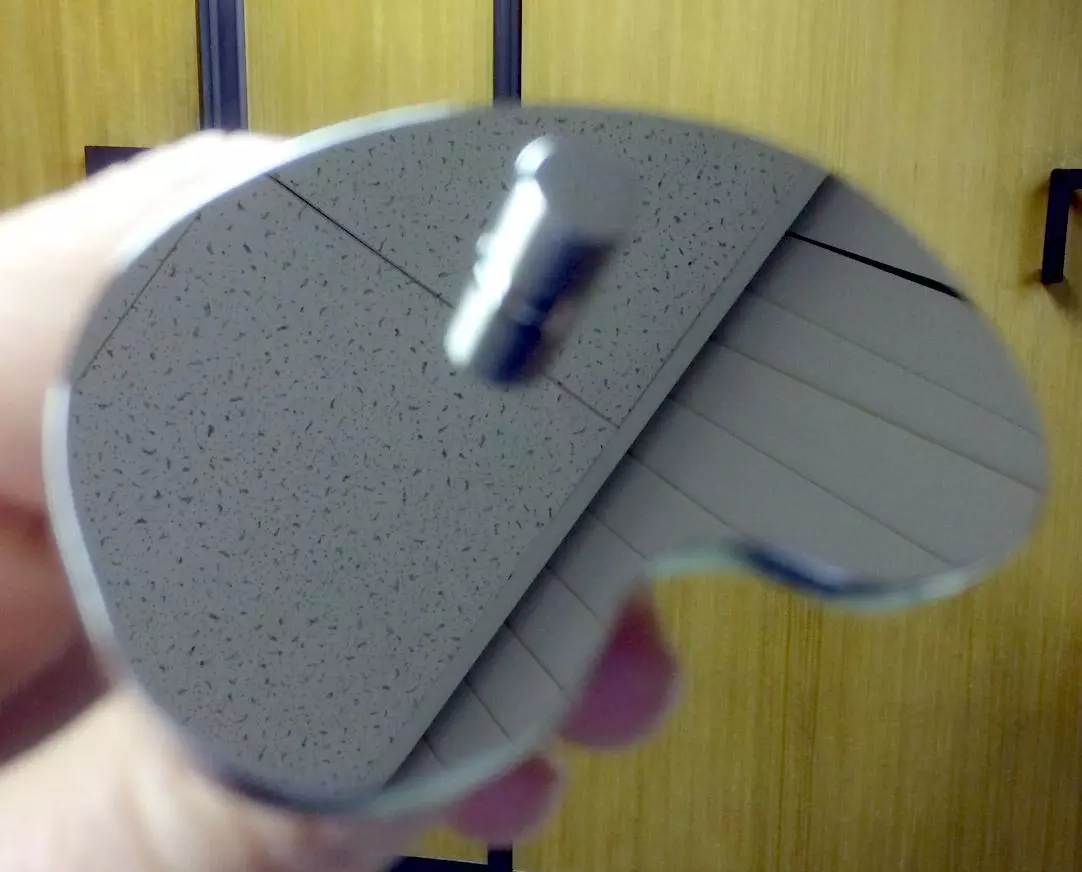
Titanium
Titanium and its alloys are widely used in medical implants, especially dental implants. It is highly biocompatible. It has been in use since 1960 and serves as a viable option for dental implants due to its durability and compatible functionality mode. It is mostly used for replacing damaged or missing teeth. The prerequisite to using this as a replacement is the good health of a person. It has an excellent bone formation and bonding ability that makes it perfect for implants. It can be manufactured by using programmed processes followed by surface finishing techniques. It also shows excellent corrosion resistance in the body resulting in long-term use and non-toxicity.
Magnesium
Steel Alloys
These are the most common and old alloys that are used as implants ranging from dental implants to orthopaedic applications. Stainless steel finds its applications where the implant is in direct contact with a biological fluid. Its type 316L is regarded as the most corrosion-resistant material for implants. It has minimum chances of causing the infection. Mostly it is used for temporary implants due to its short-term corrosion resistance. One reason for making steel implants is its lower cost, easy manufacturing, and testing. Also, they have high elasticity modulus that makes them suitable for orthopaedic implants.
Lapping and Polishing Steel alloy
Test Requirements: To develop a process to polish a spherical cap
Equipment used: Kemet SpheriMatch machine, NLH cloth, 3 micron type k slurry, Customised lap, 15” pressure weight, Co42 cleaning fluid
Process breakdown: The spherical cap was fixed on to a 15” pressure weight using foam tape, then the pressure weight was placed into the jaws of the SpheriMatch chuck and tightened using the key. Tthe customised lap was placed on the sweep arm and positioned covering half the area of the cap, the sweep length was then adjusted to give a slight sweep of about 10mm. The machine was then run for 10 minute cycles while applying 3 micron type k from a trigger spray every 2 minutes. It was run for a total of around 6 cycles to achieve the finish. Part was then cleaned with Co42 cleaning fluid.
After Polishing Steel Alloy Cap
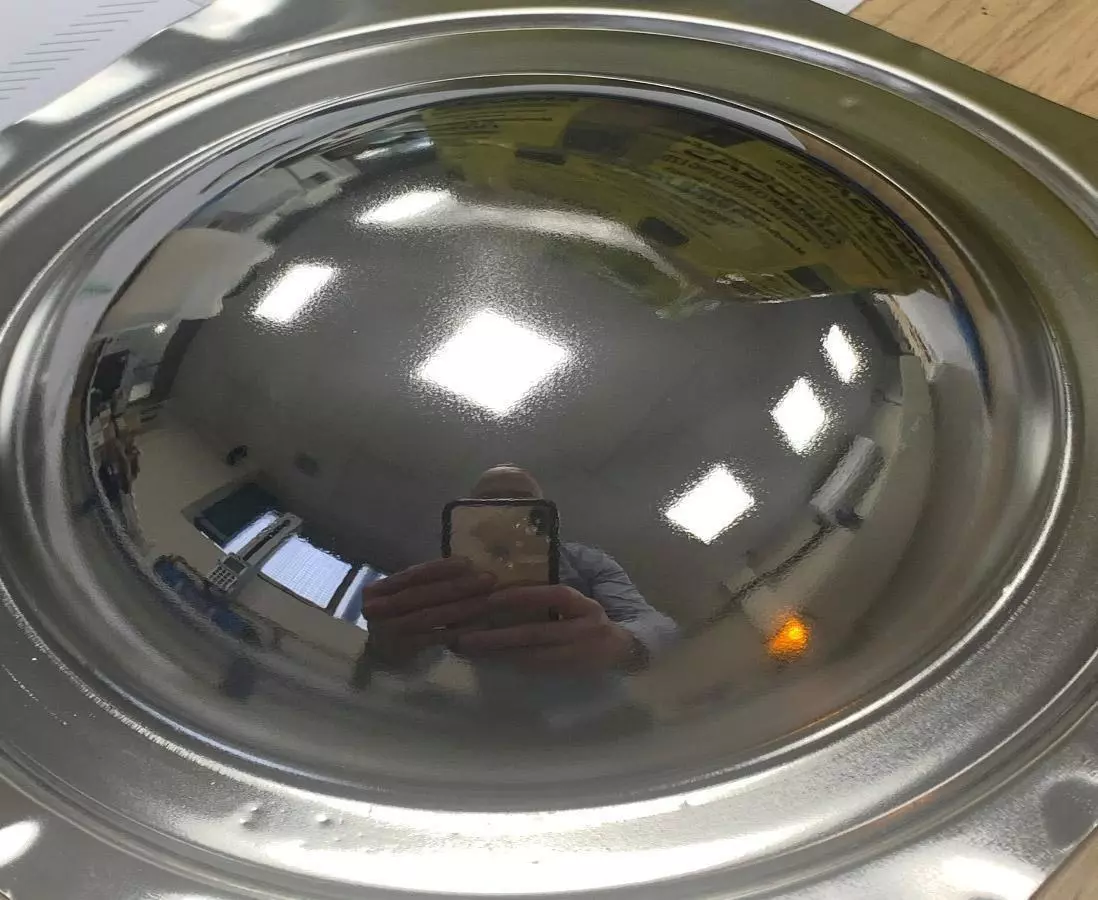
Plastics
Polymers
Teflon
Ceramics
Alumina
Zirconia
Silicon Nitride
Composites
Carbon Fibers
Medical Implants Surface Finishing Standards
Following are the standards that have been set to provide excellent quality implants:
- ISO 7206 (1, 2, and 6) for surgical implants including criteria for dimensions, articulation, and endurance for partial or total implants in the regions of the head, neck, and hip joint.
- ISO 7207 (1 and 2) for dimensional accuracy and articulation of surgical implants of partial or total knee joints.
- ISO 9583 and ISO 9584 for magnetic particle imaging and radiographic testing respectively.
- ISO 14243 (1 and 3) for wear of total knee joint with load control and environmental impact on dimensions.
- ASTM F746, F797, F1223, and F1147 are designed for crevice corrosion, fretting corrosion, constraints, and tension testing of metal coatings and calcium phosphates joints.
Nanoscale Surface Modifications
Nanoscale surface modifications are required to change the behavior of materials as they interact with human tissues. Hence nanoscale modifications can change the surface of implants can generate efficient results. There are two types of modifications that can be done:
- Chemical Modifications - It includes electrochemical modifications such as anodic oxidation that can be controlled by existing voltage values and related parameters. Another method is chemical patterning which can add nano-pits on the surface thus changing the properties such as wettability, roughness, porosity, and thickness of the layer. Selected elements can also be incorporated by using multiple solvents in an etching process. Chemical vapor deposition and sol-gel processes can also be used to alter the surface of implants.
- Physical modifications - It includes thermal oxidation and ion implantation that can change the atomic arrangement in the implants. These techniques allow depth control of biological elements and ions.